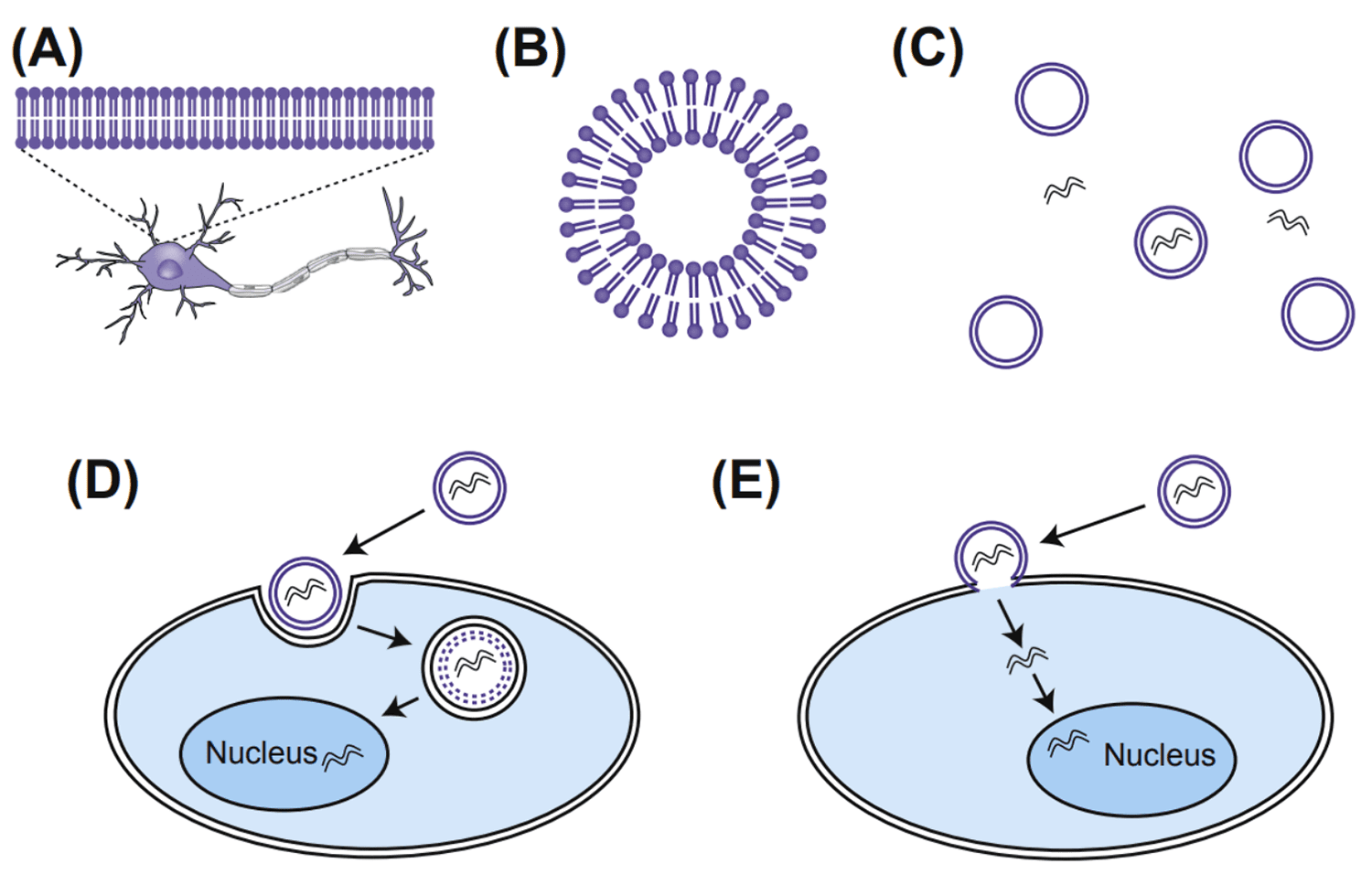* This product is for research use only. Not intended for use in the treatment or diagnosis of disease.
Effectively transferring foreign genetic material to cells for expression and functional research is a basic technique in modern cell biology. Specially designed lipid-based transfection reagents can promote the transportation of DNA, mRNA, siRNA into cells. Lipids with an overall net positive charge at physiological pH (Cationic) are the most common synthetic lipid component of liposomes developed for gene delivery. The cationic part of the lipid molecule associates with the negatively charged nucleic acid, resulting in the densification of the nucleic acid in the liposome/nucleic acid complex.
Liposome formulations may, or may not, contain the dioleoylphosphatidylethanolamine (DOPE). When included in liposome formulations, this lipid increases the gene transfer capacity of certain synthetic cationic lipids. DOPE may promote gene transfer to the nucleus by destabilizing the endosomal compartment and causing the release of lipid/nucleic acid complexes that are trapped in endosomes after cellular uptake. The promotion of gene delivery by DOPE may also be related to its fusion activity with the cell membrane, which leads to increased cellular uptake of liposome/nucleic acid complexes.
 Figure 1: Mechanism of lipofection. (A) The cell membrane is composed of a lipid bilayer, with a hydrophobic interior and hydrophilic exterior. (B) Liposomes are also composed of a lipid bilayer. (C) Liposomes forming around DNA. (D) Cells in culture can endocytose the liposome, digesting it within vesicles to release DNA. (E) Alternatively, liposomes can directly fuse with the plasma membrane, directly releasing DNA into cells. (CarTer, M., 2015)
Figure 1: Mechanism of lipofection. (A) The cell membrane is composed of a lipid bilayer, with a hydrophobic interior and hydrophilic exterior. (B) Liposomes are also composed of a lipid bilayer. (C) Liposomes forming around DNA. (D) Cells in culture can endocytose the liposome, digesting it within vesicles to release DNA. (E) Alternatively, liposomes can directly fuse with the plasma membrane, directly releasing DNA into cells. (CarTer, M., 2015)
For cultured cells, the total net positive charge of the liposome/nucleic acid complex generally results in higher transfer efficiency, presumably because this allows the complex to associate more closely with negatively charged cell membranes. The decrease in transfection frequency observed at high DNA concentrations may be due to saturation of the positive charge on the liposome.
References: